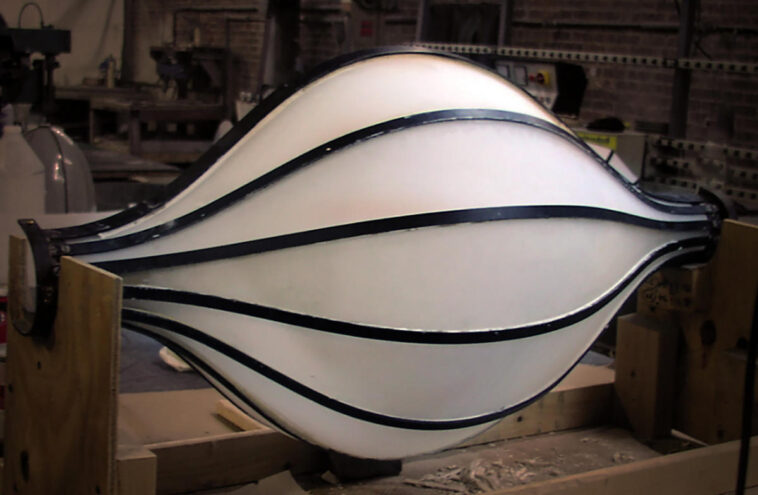Lighting plays a vital role in shaping the atmosphere and functionality of your home.
Whether you’re looking to create a cozy retreat or a vibrant, well-lit space, the right lighting solutions can make all the difference. Among the myriad options available, bent glass lighting fixtures stand out for their ability to combine elegance with functionality.
This article explores strategies to maximize your home’s lighting and explains how bent glass can elevate your home upgrade while improving light distribution.
The Importance of Layered Lighting
Effective lighting begins with layering. A well-designed space incorporates three types of lighting: ambient, task, and accent. Each layer works together to create a harmonious and adaptable environment.
Ambient Lighting
Ambient lighting is the primary source of illumination in a room, providing overall brightness. Ceiling-mounted fixtures, such as chandeliers or pendant lights, are commonly used to establish this layer. Bent glass fixtures in particular excel at ambient lighting, as their curves diffuse light evenly, creating a welcoming and balanced glow.
Task Lighting
Task lighting focuses on specific areas where activities like reading, cooking, or working take place. It is typically achieved through desk lamps, under-cabinet lights, or directed spotlights. Bent glass shades on task lighting fixtures add a touch of sophistication while preventing harsh glares by softening the light output.
Accent Lighting
Accent lighting highlights architectural features, artwork, or other focal points in a room. Wall sconces, track lighting, or LED strips are often used for this purpose. The interplay of light and shadow through bent glass can make accent lighting feel more dynamic, drawing attention to key areas while maintaining a cohesive aesthetic.
Why Bent Glass Stands Out
Bent glass has gained popularity in interior design for its unique combination of beauty and practicality. The process of heating and molding glass into curved shapes allows designers to create fixtures that are both eye-catching and efficient.
Elegance and Aesthetic Appeal
Bent glass adds a layer of sophistication to any room. Its smooth, flowing curves create an artistic statement, whether in a minimalist setting or a more traditional design. The glass can be tinted, frosted, or textured to match your décor while maintaining its luxurious appeal. A chandelier with bent glass arms, for example, can transform a dining room into an elegant focal point.
Improved Light Diffusion
One of the standout features of bent glass is its ability to distribute light more effectively. Curved surfaces refract and diffuse light, creating a softer, more even glow. This eliminates harsh shadows and ensures that the light reaches all corners of the room. Whether used in ceiling fixtures, sconces, or table lamps, bent glass enhances the overall ambiance.
Versatility in Design
Bent glass fixtures come in various styles, from sleek modern designs to ornate vintage-inspired pieces. Their adaptability makes them suitable for every room in the house. For example, a bent glass pendant light above a kitchen island can provide task lighting and a decorative centerpiece.
How to Incorporate Bent Glass Lighting
Integrating bent glass lighting into your home involves more than just selecting beautiful fixtures. Placement and purpose are key to maximizing its benefits.
Living Room
In the living room, bent glass fixtures can serve as a central feature or as accent lighting. A statement chandelier with bent glass arms creates a warm and inviting space for entertaining, while wall sconces add depth and texture to the room.
Dining Room
Overhead lighting might irk Mariah Carey, but it is essential in dining rooms, and a bent glass pendant or chandelier can create an intimate and elegant atmosphere. The diffused light ensures that the space is well-lit without being overly bright, enhancing the dining experience.
Kitchen
The kitchen requires a combination of ambient and task lighting. Bent glass pendant lights above the island or bar area provide functional lighting while adding a touch of style. Under-cabinet lights with bent glass shades can illuminate countertops for cooking and prep work without harsh glare.
Bedroom
In the bedroom, bent glass table lamps or wall-mounted sconces offer soft, soothing light for reading or relaxation. Their gentle glow creates a calming environment while the stylish design adds to the room’s décor.
Bathroom
Bent glass fixtures are perfect for bathrooms, where functionality and aesthetics are important. Wall sconces on either side of a mirror provide flattering, even light for grooming, while a small bent glass chandelier can add a touch of luxury.
Tips for Maximizing Lighting Effectiveness
To get the most out of your lighting, consider the following tips:
– Dimmer Switches: Install dimmer switches for bent glass fixtures to control light intensity and set the desired mood.
– Layering: Combine ambient, task, and accent lighting for a versatile and cohesive design.
– Fixture Placement: Ensure fixtures are placed strategically to eliminate dark corners and maximize light distribution.
– Bulb Choice: Use LED bulbs to enhance energy efficiency without sacrificing brightness or warmth.
Conclusion
Lighting is a cornerstone of interior design, and bent glass offers a unique opportunity to blend elegance with functionality. Its ability to diffuse light evenly while adding a touch of sophistication makes it an ideal choice for any room in your home. By layering lighting, selecting appropriate fixtures, and carefully placing bent glass elements, you can create a space that is not only visually stunning but also highly practical. Invest in bent glass lighting to transform your home into a haven of style and comfort.







Comments